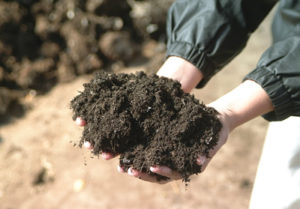Purpose
To bring additional value to digestate and digestate derived products by creating customer assurance of the digestate’s physical and chemical characteristics. By participating in this Program, we hope you’ll be able to generate more revenue from the digestate produced by your anaerobic digester system.
About the ABC’s Digestate Standard Testing and Certification Program
 The ABC Digestate Standard Testing and Certification Program (“Program”) creates a voluntary, industry led, third party verified standard method of quantifying, characterizing and communicating the physical and chemical qualities of digestate. For example: total nitrogen (N), phosphorus (P), and potassium (K), pH, total solids/moisture content, metals, pathogens, physical contamination, salts, and stability.
The ABC Digestate Standard Testing and Certification Program (“Program”) creates a voluntary, industry led, third party verified standard method of quantifying, characterizing and communicating the physical and chemical qualities of digestate. For example: total nitrogen (N), phosphorus (P), and potassium (K), pH, total solids/moisture content, metals, pathogens, physical contamination, salts, and stability.
The Program provides standardized terminology, quality management systems, and test methods administered by Program-Certified laboratories for characterizing digestate. The characterization allows digestate producers to relay important information regarding composition and appropriate beneficial uses of digestate to regulators and users of digestate.
The Program enables the biogas industry to effectively communicate the valuable environmental and agronomic benefits of digestate to key stakeholders and to serve as a model for any future local, state or federal regulation of digestate, not otherwise addressed by existing statute or voluntary compliance programs. More Details [Link to Summary of the Program Page]
What is Digestate?
 Digestate is the solid and liquid product resulting from the anaerobic digestion of organic materials. Digestate contains a combination of remaining undigested organic and inorganic materials, as well as the biomass and micronutrients created by the microbial process. Whole Digestate denotes the material as removed from the digestion vessel without any additional physical or chemical processing. Separated Liquid Digestate and Separated Solid Digestate denote the materials created from a physical separation of whole digestate, with or without the use of dewatering polymers or heat, but without the use of any additional chemical processing.
Digestate is the solid and liquid product resulting from the anaerobic digestion of organic materials. Digestate contains a combination of remaining undigested organic and inorganic materials, as well as the biomass and micronutrients created by the microbial process. Whole Digestate denotes the material as removed from the digestion vessel without any additional physical or chemical processing. Separated Liquid Digestate and Separated Solid Digestate denote the materials created from a physical separation of whole digestate, with or without the use of dewatering polymers or heat, but without the use of any additional chemical processing.
What is a Digestate-Derived Product?
A new product that is produced using digestate and employing one or more post-treatment processes other than simple physical separation into solid and liquid digestate. This Program is designed for raw digestate, but we hope it will also bring additional value to digestate derived products.
Key Changes to Organic Materials From Anaerobic Digestion
The processing of organic material within an anaerobic digester yields not only biogas, but also liquid and/or solid products called raw or whole digestate. Raw or whole digestate produced by a biogas system is physically and chemically different from the organic input material used to produce it.
Key Changes to Organic Materials from Anaerobic Digestion
Undigested Inputs
- Often heterogeneous, hard to obtain sample for accurate characterization or analysis
- May contain bulk physical contaminants such as packaging or non-organic physical contaminants
- Many contain and facilitate growth of pathogens, weed seeds
- Highly unstable, putrescible (odors, VOCs, methane)
- Nutrients predominantly in the organic form, lower plant availability
- May be bulky, low transport efficiency
Digestate
- Homogeneous, highly representative sampling for accurate characterization
- Physical contaminants largely removed in pretreatment
- Substantial (>90%) reduction in pathogen levels, and kills viable weed seeds [reference]
- Substantial stabilization and reduction in odor, VOC and methane potential
- Nutrients predominantly shifted to inorganic form [reference], greater plant availability PLUS additional micronutrients resulting from the die-off of the microorganisms and when used, added micronutrients. [reference]
- Densified, higher transport efficiency